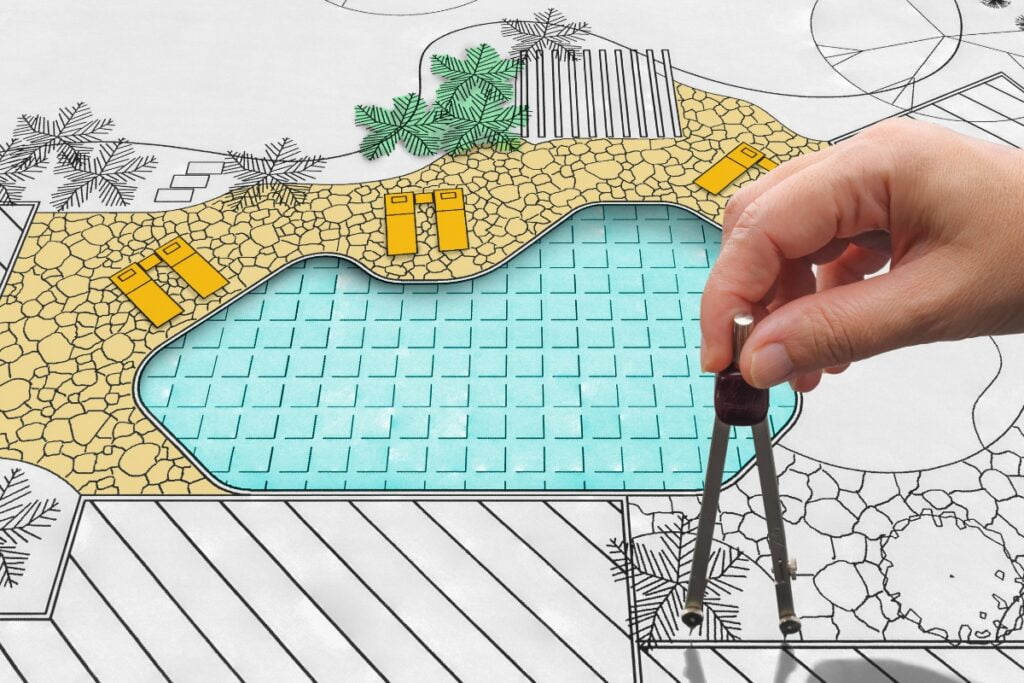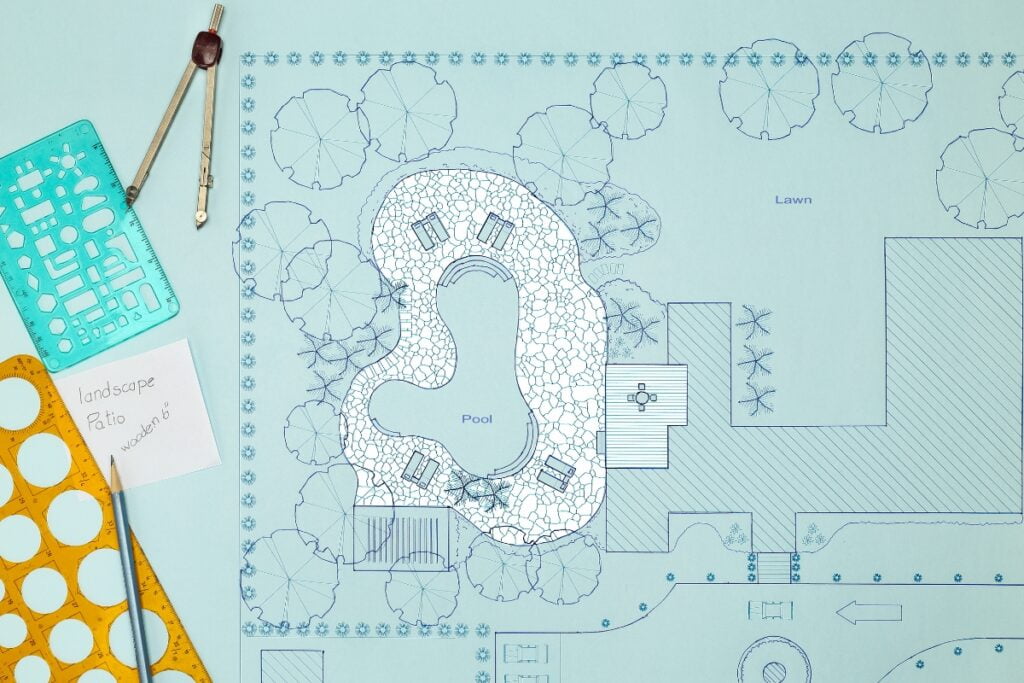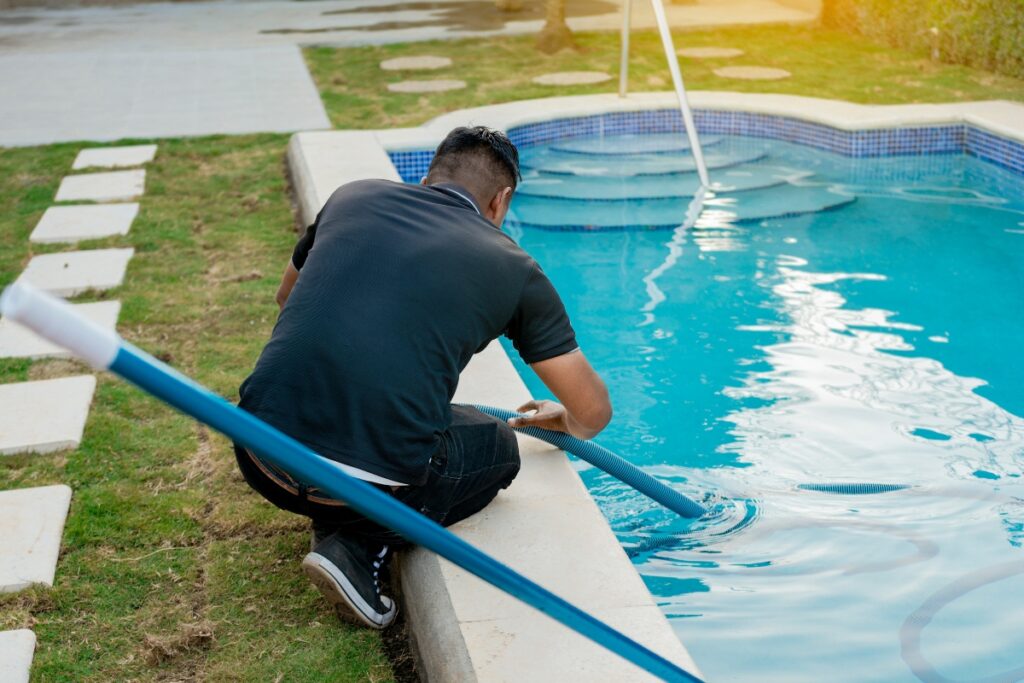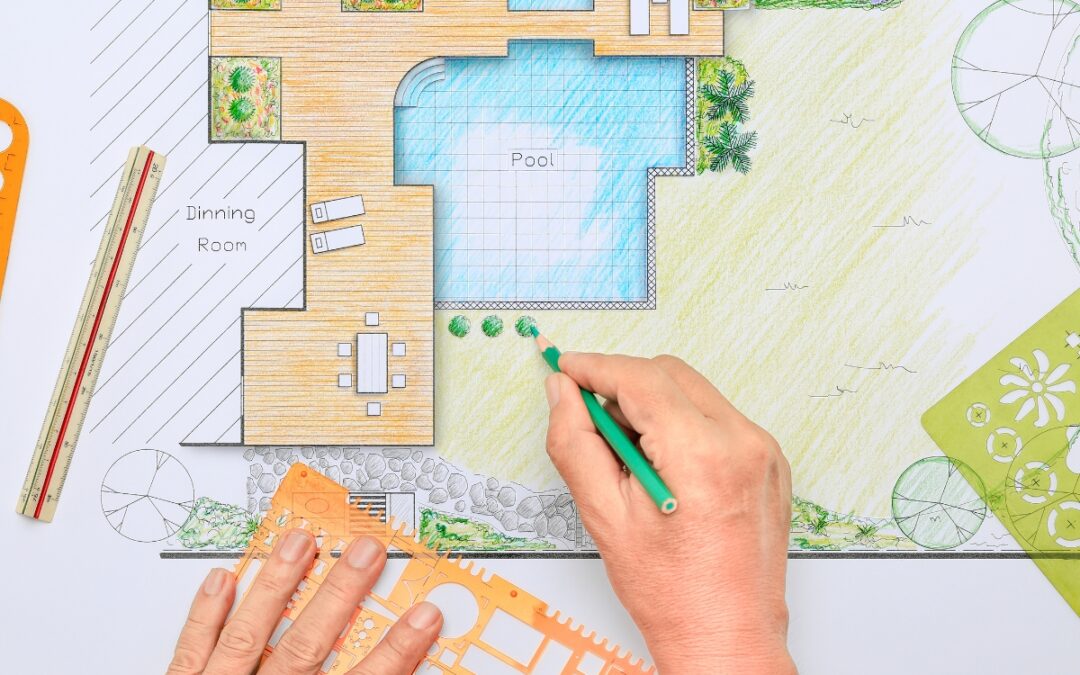Building a pool is an exciting process, but it comes with its fair share of bureaucratic paperwork and logistics. Whether you’re an experienced pool builder or starting from scratch, having a pool planning checklist is a must if you want to ensure the success of your project.
A good pool planning checklist should provide step-by-step instructions to guide you through the entire pool-building process. With the right guidance, you’ll be able to plan your pool like a pro.
This blog post provides an extensive guide for simplifying your pool planning and getting one step closer to having your dream pool. Get ready to plan your pool like a pro with this handy pool planning checklist.
Set a Budget for Your Pool Project

Creating a budget for a pool project is an essential part of the pool planning process. Whether you’re building a new pool or renovating an existing one, having an accurate budget will help you stay on track during the planning process.
To ensure that your pool project stays on track, it is important to set a budget. Of course, this will depend on your specific project, but there are some general guidelines that you can follow when creating your budget.
Before setting a budget for your pool project, you should first assess your needs. Do you want a large pool or a more modest one? How much landscaping do you want around the pool? Do you want to include a pool house? These are all questions that you should consider when creating your budget.
Once you have determined your needs, you should research the cost of materials and labor. Talk to local pool contractors to get an idea of the cost of construction, labor, and materials. This will help you set a realistic budget for your project.
Once you have a sense of the cost of the project, you should create a budget spreadsheet for tracking your pool project expenses. This will help you stay organized and ensure that you are staying on track with your budget.
When creating your budget spreadsheet, be sure to include all the necessary costs, such as pool construction, landscaping, pool house construction, and any other additional costs. Additionally, you should include a contingency fund in case there are any unexpected costs. This will help you stay on track with your budget and ensure that your project is a success.
Estimate the Size and Shape of Your Pool

When it comes to planning your pool, one of the most important steps is to estimate the size and shape of your pool. This can help determine the overall cost of the project, as well as give you an idea of the design layout and features you can include. Knowing the size and shape of your pool is the first step in the pool planning checklist, and here are some tips to help you get started.
Before you plan the size and shape of your pool, it is important to take into account the size of your yard and any pre-existing features or structures. This will help to determine the size and shape of the pool that would best fit your property and your personal preferences. Consider the area you’re considering for your pool and any other outdoor features you want to such as a a patio, deck, or hot tub.
When choosing the shape of your pool, think about how you will use it. If you are looking for a more traditional look, then an oval or rectangular pool may be the best choice. However, if you want something more unique or modern, then consider a kidney-shaped or free-form pool.
When it comes to estimating the size of your pool, the general rule of thumb is that a pool should be around three feet deep and six feet wide. This will provide enough room for swimming, playing, and entertaining. However, if you are looking for a larger pool or are considering adding features like a hot tub, then you may need to make adjustments to the measurements. In addition, think about the pump and filter needed for the pool, as well as the size of the pool deck.
Choose a Pool Installation Method

When it comes to pool installation, there are a variety of methods to choose from. Depending on the type of pool you’re looking to install, the terrain it will be built on, and the type of materials you plan to use, you will need to decide which method is best for you.
While there are many different methods and styles to consider, here are three of the most popular methods of pool installation that you may want to consider.
The first method for pool installation is the in-ground pool. This method involves excavating a hole in the ground and then building a pool frame that is either made from concrete, fiberglass, or vinyl.
With this method, you have the choice of selecting a variety of shapes and sizes for your pool, as well as a range of colors and features. This method of installation is ideal for those who want a custom-designed pool or for those who are looking for a more permanent solution.
The second method for pool installation is the above-ground pool. This type of pool is usually constructed using a prefabricated pool kit, making it much easier to install than an in-ground pool. This method is ideal for homeowners who want a more cost-effective solution and who live in an area with limited space. With an above-ground pool, you can also select from a variety of shapes and sizes, as well as a range of colors and features.
The third and final method for pool installation is the semi-inground pool. This method is ideal for those who want the look of an in-ground pool but don’t have the time or money to install one. This type of pool requires a hole to be dug in the ground, followed by a frame that is usually made from either concrete or vinyl. Like the above-ground pool, the semi-inground pool can also be customized to fit your style, as well as your budget.
Research Local Regulations for Pools

As part of a pool planning checklist, it is essential to research local regulations and safety codes that pertain to pool construction and maintenance in your area. This includes permits, zoning laws, and safety code standards. Doing the research from the start will save time and money in the long run.
When researching local regulations, it is important to have an understanding of the zoning laws in your area. Zoning laws dictate what types of activities and projects are allowed in certain areas. For example, a city may require a permit for any pool that is larger than a certain size. It is important to ensure that your project meets the requirements of your local zoning laws in order to avoid any delays or fines.
In addition to zoning laws, safety code standards are also an important part of the pool planning checklist. Safety code standards for pools are in place to ensure the safety of users and those around the pool. Standards include things like fencing, depth markers, and other safety features. It is essential to make sure that the pool you plan to build meets the safety code standards in your area.
It is also important to check if any permits are required for your pool. Depending on the size, shape, and location of your pool, you may need to obtain a permit from your city or state. Permits can be expensive and time consuming, so it is important to plan ahead and check the regulations for your area.
Select the Best Pool Site on Your Property

Selecting the ideal pool site is a critical decision when building a pool. Consider these key factors to ensure the best location. First, evaluate the sun exposure throughout the day to maximize warmth and comfort. Take advantage of scenic views and prioritize privacy by strategically positioning the pool. Accessibility is essential, so choose a site that allows easy access from various areas of your property.
Check the ground conditions and ensure the site is relatively flat or manageable for construction. Verify the location of underground utility lines and comply with local regulations and permits. Prioritize safety by avoiding hazardous areas and complying with pool safety requirements.
It’s beneficial to seek professional advice from pool builders or landscape architects. They can assess your property and provide expert guidance tailored to your needs. By considering sun exposure, views, privacy, accessibility, ground conditions, utilities, safety, and professional advice, you’ll select a pool site that enhances your outdoor space and delivers an enjoyable swimming experience. Take the time to plan and choose wisely for your dream backyard oasis.
Consider Pool Maintenance Requirements

Before building a pool, it’s crucial to consider the maintenance requirements that come with pool ownership. Here are key factors to keep in mind. First, choose a suitable filtration system and understand its maintenance needs.
Maintaining the right chemical balance in the pool water is essential, requiring regular testing and adjustments. Skimming and cleaning the pool surface, along with vacuuming the pool floor and walls, are important to remove debris and keep the pool clean.
Perform routine maintenance tasks such as checking and cleaning the pump and skimmer baskets, inspecting equipment, and brushing the pool walls and tiles.
Consider seasonal maintenance requirements, such as winterizing the pool in colder climates and managing increased usage in warmer months. Professional assistance from a pool service company can ensure proper maintenance and address any issues.
Consider Insurance Requirements

When planning for your pool, one of the important considerations to keep in mind is insurance requirements. Your pool, like many other home improvement projects, presents a risk of injury or damage to your property. It’s important to make sure that you have the necessary coverage in place in order to protect yourself and your investment.
When looking into insurance requirements, the first step is to talk to your homeowner’s insurance provider. Explain the plans that you have for your pool and ask about the types of coverage that are available for your particular project.
Your homeowner’s insurance policy will usually cover any damages that occur to your home or other structures on your property as a result of your pool installation. However, it’s important to make sure that your policy is up to date and that it covers all of the potential risks associated with your pool.
In addition to talking to your homeowner’s insurance provider, you may also want to consider purchasing additional coverage for your pool. This could include coverage for liability, public liability, and/or property damage. Liability coverage will protect you if someone is injured in your pool and will cover any medical expenses that are associated with the incident.
Public liability coverage can protect you in case someone is injured anywhere on your property due to your pool. Finally, property damage coverage can help cover any repairs or replacements that are needed if your pool is damaged due to an act of nature or other event.
It’s important to make sure that you understand all of the details of your insurance policy before signing any contracts. Read all of the fine print and ask questions if you’re unclear on anything. You should also get a copy of your policy so that you can review it and make sure that it covers all of the potential risks associated with your pool.
By taking the time to consider the insurance requirements of your pool, you can help protect yourself and your investment. As you’re planning your pool on your pool planning checklist, make sure to include insurance as part of the process. Doing so can help ensure that you have the coverage you need in the event something unexpected happens.
Conclusion
The best way to plan your pool like a pro is to create a pool planning checklist. This checklist should include all of the necessary steps for a successful pool planning process, from start to finish.
Taking the time to plan out each step will ensure that the process goes as smoothly as possible. By using a pool planning checklist, you can rest assured that nothing will get overlooked and your pool will be completed on time and within budget.
Furthermore, it will provide you the opportunity to review the entire project and make any necessary changes before the work begins. With a pool planning checklist in hand, you can confidently move forward with your pool project with the assurance that you have thought of every detail.
When it comes to pool installation, trust Clear Water Pools of Atlanta for unmatched expertise. Our pool building services are tailored to your specifications, delivering exceptional results with meticulous attention to detail. In addition to pool construction, we also offer comprehensive pool care and maintenance services to ensure your pool remains in optimal condition.
From routine cleaning to equipment inspections and repairs, we’re committed to making your pool a source of joy and relaxation. Contact us at 770-406-8638 for a free estimate and let Clear Water Pools of Atlanta bring your dream pool to life today!





